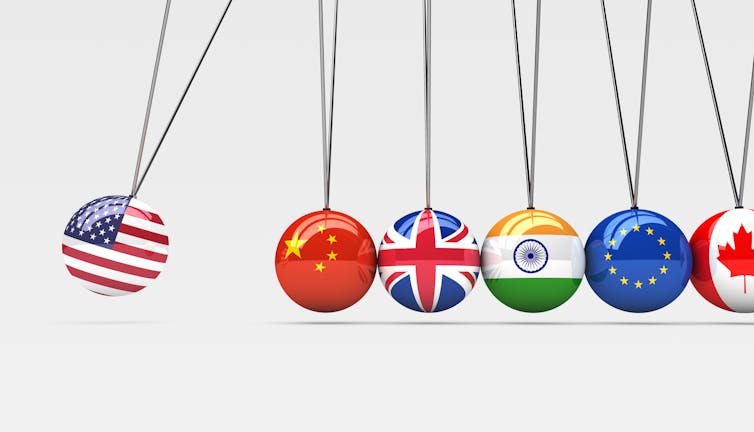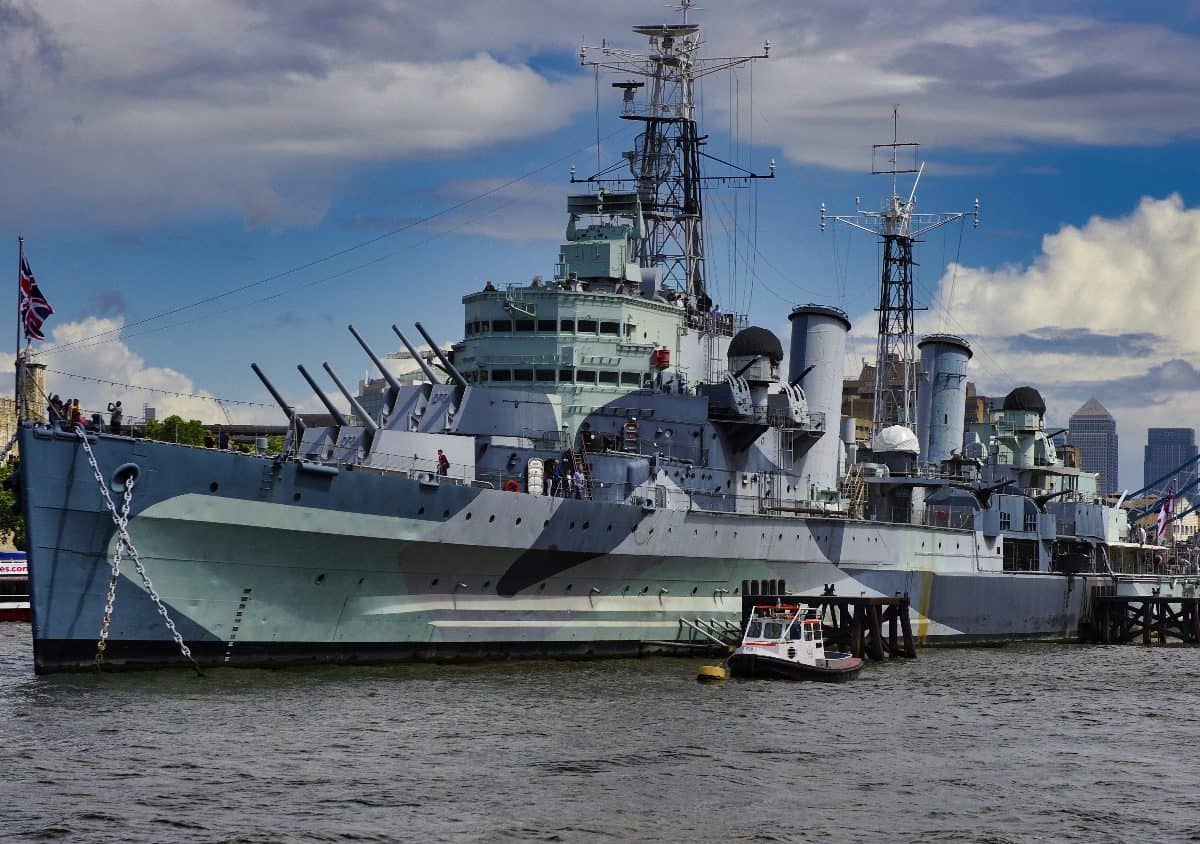Graeme Davies, University of York
In a post-Brexit world the UK is trying to navigate both a changing international security situation and the loss of unfettered access to its largest market. The new Integrated Review aims to provide answers to this problem by turning Britain’s focus more towards Asia and the Pacific Rim for both trade and security partnerships. The UK is seeking to join the 11-nation trade bloc the Comprehensive and Progressive Trans-Pacific Partnership (CPTPP), while deploying naval forces to patrol the region.
Clearly, there is a shift in global economic and military power towards Asia and any British government would be remiss to ignore that – but there is no getting away from the fact that the UK’s local security environment is European. The UK is an Atlantic rather than a Pacific power, and it will struggle to project its military power eastwards even with two new aircraft carriers.
So what are the challenges of this pivot eastwards and why is the UK going east of Suez again? Three issues are immediately apparent.
Pacific partnership
The CPTPP, which is a free-trade agreement between 11 countries around the Pacific Rim, potentially provides the UK with access to a market of 500 million people. The UK’s current trading relationship with the bloc accounts for approximately 10% of UK exports. This is similar to its trading relationship with Germany – but a fraction of UK trade with the European Union, which was 47% of UK exports in 2019.
That said, there is some potential for an increase in the UK’s relationship with the CPTPP countries rapidly developing and growing their economic wealth. Australia, Canada, Japan, New Zealand and Vietnam are members of the 11-country bloc and there is talk of the Biden administration taking the US back in at some point.
The UK’s main problem is distance: while the UK is only 21 miles from France, the distance between London and Tokyo is 5,983 miles (Japan is currently the largest economy in CPTPP). How does the UK make itself relevant to countries so far away and how does it foster trade between them?
The security pivot to the east seems to be an attempt to deal with this problem. The projection of military power in the form of a carrier strike group, led by the new aircraft carrier HMS Queen Elizabeth, may provide the UK with at least a semblance of interest in the region and signal a willingness to protect its maritime trade routes.
But sending military forces to east Asia may lead to potential confrontation with China.
The China question
This is the £30.7 billion pound question (UK exports to China in 2019). China is the second-largest economy in the world and is forecast to overtake the US in 2028. Successive UK governments have recognised the economic importance of China and have tried to improve relations with the country.
This is a major headache for the British government. The UK clearly has significant incentives to foster economic cooperation, particularly after Brexit – but it also views China as a strategic competitor that can’t be trusted.
Huawei’s investment in the UK’s 5G digital infrastructure is a clear example of the competing pressures on the UK government. Advocates for Huawei have claimed its technology is world-leading and cost-effective, while detractors argue that placing Huawei’s hardware at the core of 5G network infrastructure would give the Chinese government access to sensitive data and constitute an unacceptable risk. In the end the UK, under some pressure from the United States, decided to remove Huawei’s equipment from the UK’s 5G infrastructure.
Developing a strategy to confront these two opposing pressures – expanding economic cooperation while confronting a perceived Chinese threat will not be easy. Does the UK ignore the Chinese government’s behaviour to protect economic cooperation or does it pick a side and begin a policy of containment regardless of the economic costs?
Special relationship
One of the key principles that the Integrated Review states is: “The United States will remain our most important bilateral relationship” – and a pivot east may help to maintain this relationship. Prior to Brexit, the UK played the role of bridge between the US and the EU as well as being an active member of Nato. Post-Brexit the UK is no longer able to play the role of bridge although it can still be an active member of Nato.

The pivot east appears to be an attempt to not only foster new trading relationships but also demonstrate the UK’s relevance to the US as it moves its security focus towards China and the Asia-Pacific region. It suggests a belief that, by cooperating with US attempts to counter growing Chinese power, the UK will continue to show its value to Washington as a dependable and capable ally.
The problem the UK has is that by closely following the US, it may put further economic cooperation with China at risk. Developing trade deals with China won’t be easy if your closest ally wants your support as it works to contain Chinese influence. How does the UK square the circle of maintaining good relations with the United States and China?
While there are numerous reasons as to why the UK may wish to pivot eastwards, these are the three areas that British policymakers appear to be focusing on post-Brexit: fostering trade, negotiating a sustainable approach to China, and continuing to maintain close economic and security ties with the US.
But while this repositioning towards the Asia-Pacific may present itself as a partial solution to some of the UK’s problems, it will also create considerable future challenges that have no easy answers.
Graeme Davies, Professor, Department of Politics, University of York
This article is republished from The Conversation under a Creative Commons license. Read the original article.












